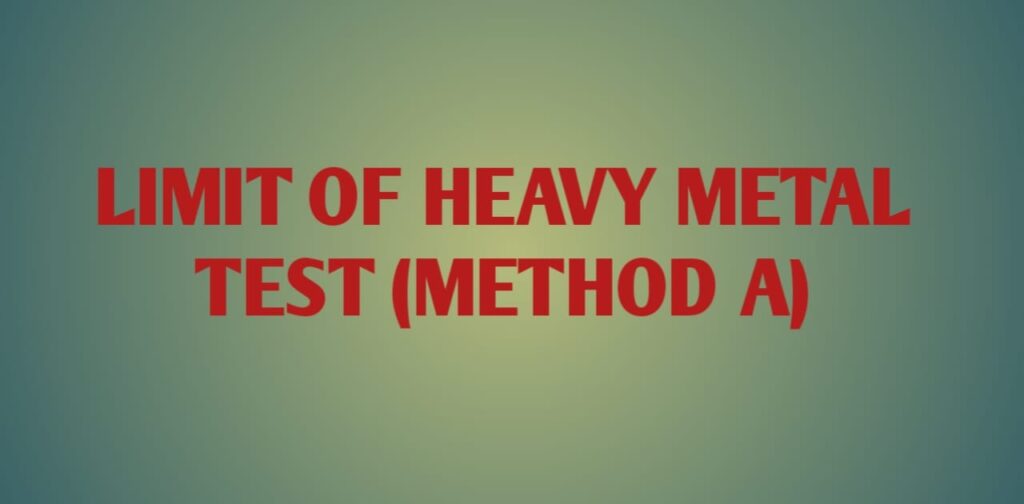| Heavy metal Method B |
| 1. Apparatus: • 10 ml volumetric flask • 2 ml graduated pipette • 250 ml volumetric flask • 10 ml graduated pipette • 100 ml volumetric flask • 250 ml conical flask • U- shaped glass tube • Nessler cylinder • 50 ml measuring cylinder • Silica crucible 2. Reagents:(Heavy metal) • Lead standard solution (20 ppm Pb) • Dilute acetic acid • Dilute ammonia solution • Sulphuric acid AR grade • Nitric acid AR grade • Hydrochloric acid AR grade • Hydrogen sulphide solution Preparation of reagents: Lead standard solution (20 ppm Pb): Dilute 2 ml of lead standard solution (100 ppm Pb) to 10 ml with purified water. Lead standard solution (100 ppm Pb): Dilute 1 ml of lead standard solution (0.1% Pb) to 10 ml volumetric flask make up with purified water. Lead standard solution (0.1% Pb): Dissolve 0.400 g of lead nitrate in water containing 2 ml of nitric acid and add sufficient purified water to produce 250.0 ml. Dilute acetic acid: Dilute 5.7 ml of glacial acetic acid to 100 ml with purified water. Dilute ammonia solution: Dilute 42.5 ml of strong ammonia solution to 100 ml volumetric flask make up with purified water. Hydrogen sulphide solution: A freshly prepared saturated solution of hydrogen sulphide in purified water/water for injections. Prepare the gas by the action of hydrochloric acid, diluted with an equal volume of water, on iron sulphide and collected in purified water. Heavy metal Method: Standard solution: Into a 50-ml Nessler cylinder pipette 1.0 ml of lead standard solution (20 ppm Pb) and dilute with purified water/water for injections to 25 ml. Adjust pH with dilute acetic acid or dilute ammonia solution to a pH between 3.0 and 4.0, dilute with purified water/water for injections to about 35 ml and mix well. Test solution: Weigh in a suitable crucible the quantity of the substance specified in the STP, add sufficient sulphuric acid to wet the sample, ignite carefully at a low temperature until thoroughly charred. Add to the charred mass 2 ml of nitric acid and 5 drops of sulphuric acid and heat continuously, until white fumes are no longer. Ignite, preferably in a muffle furnace, at 500°C to 600°C, until the carbon is completely burnt off. Cool, add 4 ml of HCl(hydrochloric acid), cover, keep on a water-bath for 15 minutes, uncover and slowly evaporate to dryness on a water-bath. Moisten the residue with 1 drop of HCl(hydrochloric acid), add 10 ml of hot water and keep for 2 minutes. Add ammonia solution dropwise until the solution is just alkaline to litmus paper, dilute to 25 ml with purified water/water for injections and adjust with dilute acetic acid to a pH between 3.0 and 4.0. Filter, if necessary, rinse the crucible and the filter with 10 ml of purified water/water for injections, combine the filtrate and washings in a 50-ml Nessler cylinder, dilute with purified water/water for injections to about 35 ml and mix well. Procedure: To each of the cylinders containing the standard solution and test solution respectively add 10 ml of freshly prepared hydrogen sulphide solution, mix, dilute to 50 ml with purified water/water for injections, allow to stand for 5 minutes and view downwards over a white surface. Observation : The colour produced in the test preparation should not be more intense than that of standard preparation. |

